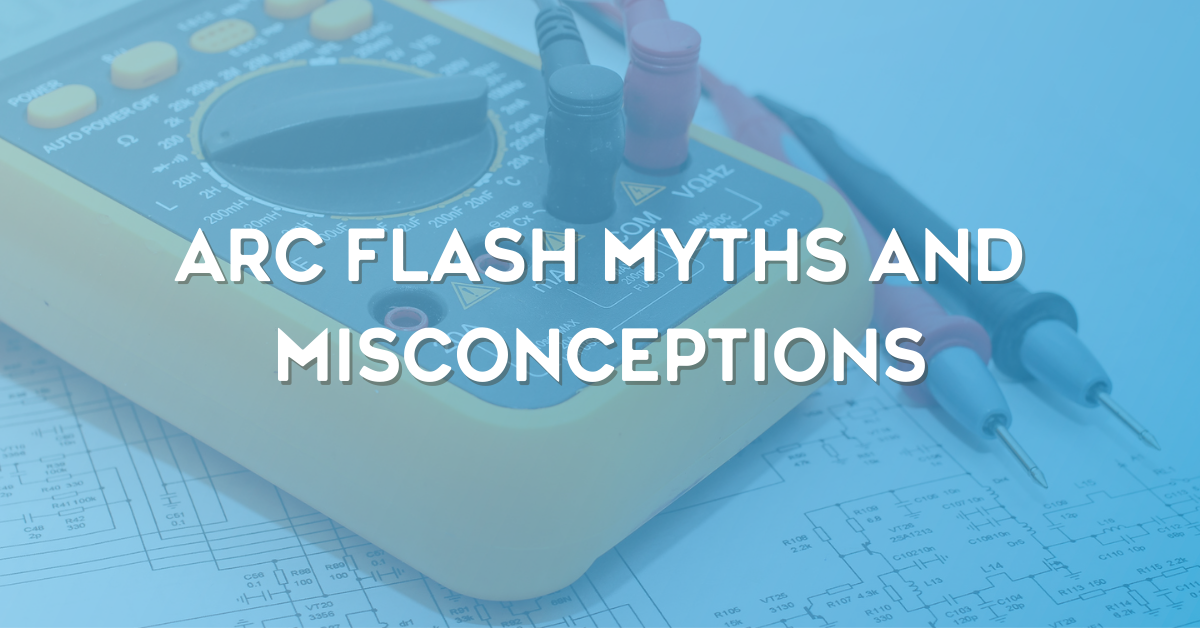
Electrical arc flash is a dangerous hazard for anyone working on or near energized conductors and equipment. A proper understanding of the potential hazards is a big part of your overall electrical training regimen. The following common myths and misconceptions about arc flash must be refuted in order to maintain worker safety.
Myth: “I’ve never seen or experienced an arc flash, so I doubt it will happen to me.”
Truth: According to a 2015 study sponsored by the National Fire Protection Association (NFPA) and UL, the incidences of both fatal and non-fatal electrical injuries have declined with improved safety and design practices. However, these numbers are nowhere near zero. Data from BLS shows that between 1992 and 2013, there were 6,000 fatal work-related electrical accidents, in a wide range of occupations.
Myth: “Working on low-voltage circuits and equipment, I don’t have to worry about arc flash.”
Truth: Even equipment operating below 480 V can sustain arc flashes. NFPA quotes an Ontario study showing 55 percent of low-voltage accident victims had received flash burns. Secondary effects included extensive physical, psychological and neurological problems, including blindness, anxiety, insomnia, numbness, weakness, flashbacks, and chronic pain.
Myth: “As long as I’m wearing arc-rated clothing at the PPE level specified on the warning label, I can safely work on energized equipment.”
Truth: While arc-rated garments and equipment are important for safety, they are useless if not used, stored, and maintained properly. Workers must be trained in these and many other aspects of electrical safety, in order to fulfill the requirements of the NFPA 70E standard for electrical safety in the workplace.
In addition to wearing the correct PPE, NFPA 70E requires managers to issue permits for any work to be performed on energized equipment of 50 volts or greater. The standards also require regular management audits of safety plans and practices.
Myth: “I need to wear PPE to walk near an area with electrical equipment.”
Truth: As long as the electric enclosures are securely shut and the equipment is operating normally, with no energized parts exposed, arc-rated protection is not needed.
Myth: “The NFPA 70E Table 130.7 can determine the correct PPE level for this equipment without a risk analysis.”
Truth: This is true as long as the equipment is running properly, is maintained regularly, and has not been degraded. However, other factors that may affect the PPE level include the equipment’s design, manufacture, and installation. Another consideration is that developing the 70E table required compromises to make it applicable to a wide range of equipment and tasks. To be safe, a full risk analysis using additional information, such as short circuit and protective device coordination, should be performed by a qualified and experienced professionals.
Myth: Once a piece of equipment has been evaluated for arc flash hazard, there’s no need to re-do the study.
Truth: As equipment ages, both its age and the quality of the maintenance program will have an effect on the likelihood of an arc flash occurrence. At the same time, NFPA and other organizations are constantly working to improve worker safety by following the latest research.
Manufacturers of PPE continue to create new materials and garments that better protect workers who may be exposed to arc flash.
Employers have the responsibility to audit their safety and PPE programs and retrain employees at least every three years, to ensure they are NFPA compliant. Good arc flash hazard software programs will be easily updated with each upgrade to the standards, ensuring that employees are protected.
Want to learn more about Arc Flash Electrical Safety Training? Register for our two-day instructor-led course, which includes changes to the 2021 NFPA. You can also watch our previous webinar about Arc Flash Analysis here.






Comments
Sorry, no comments found for this article